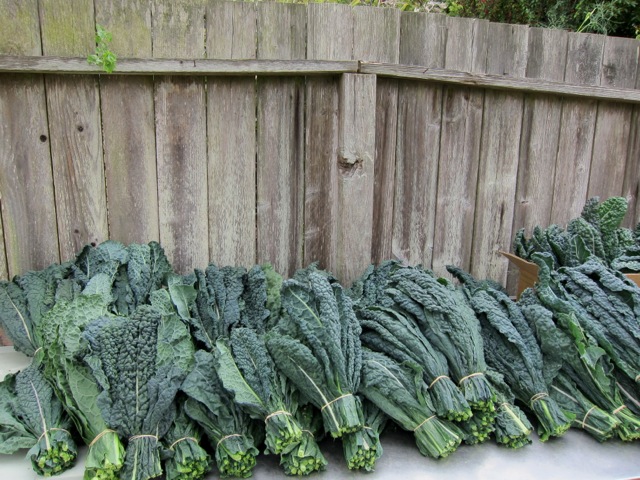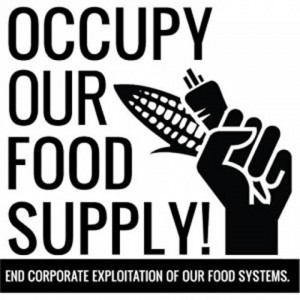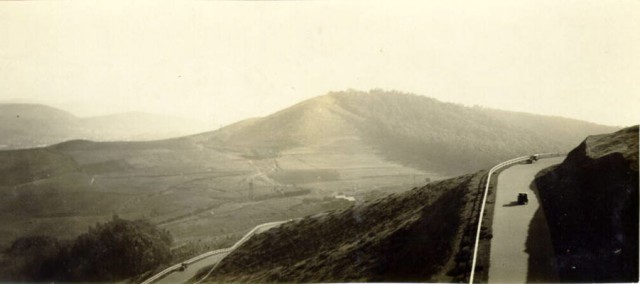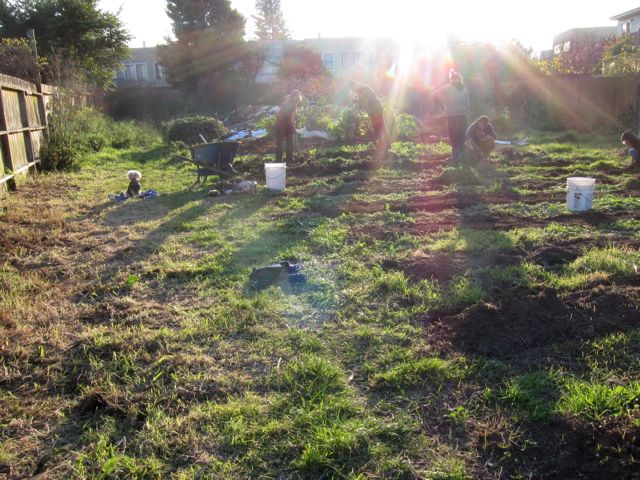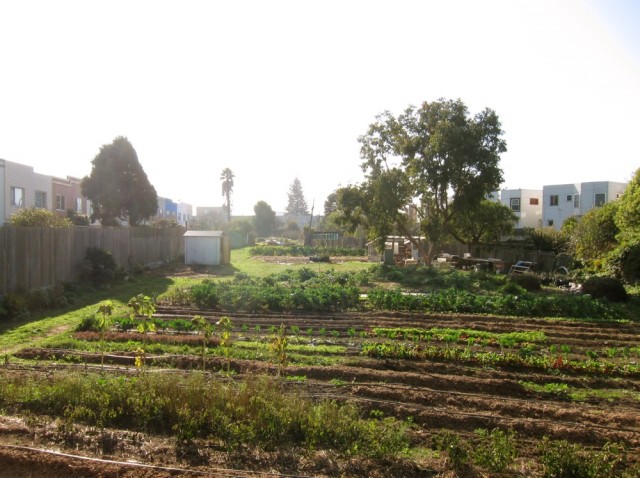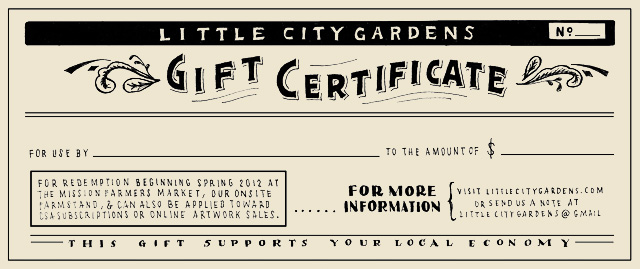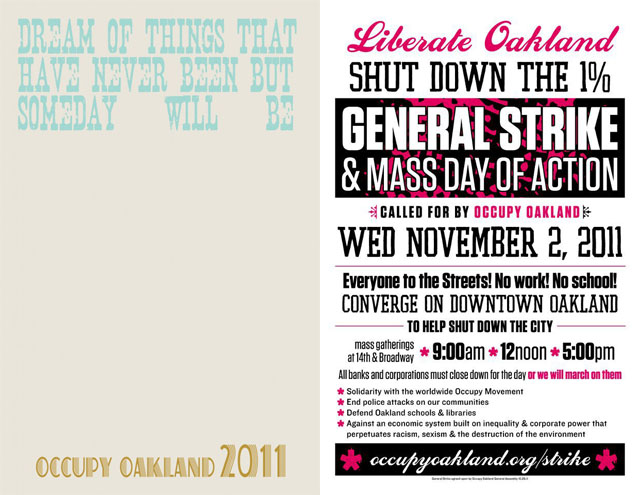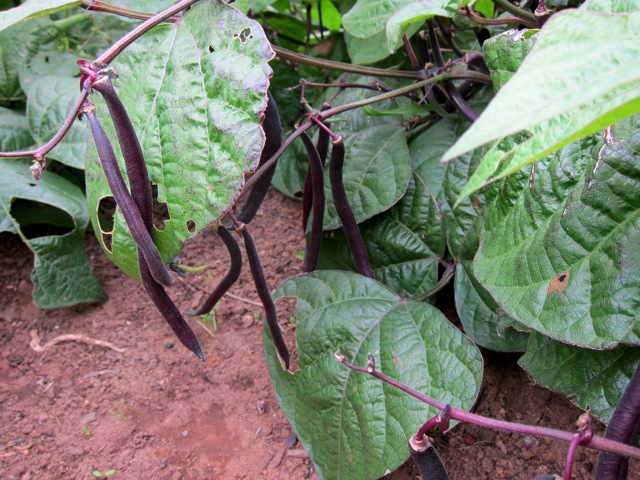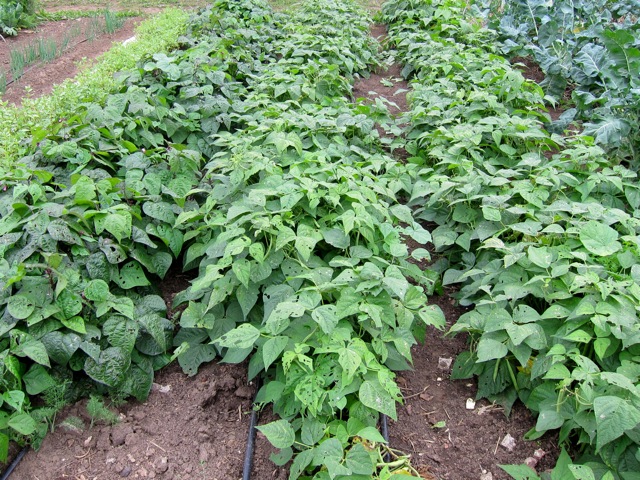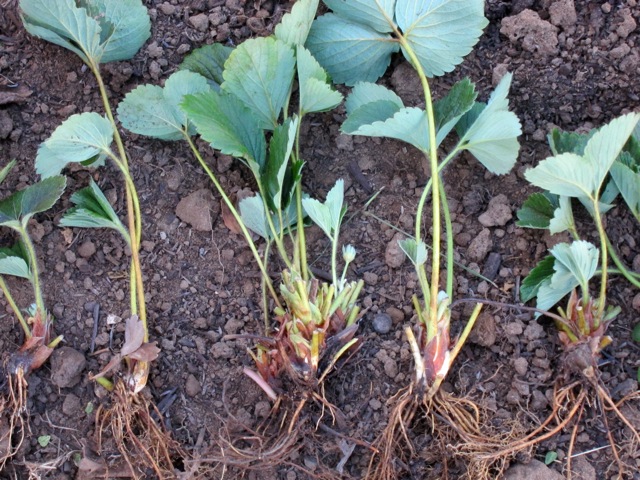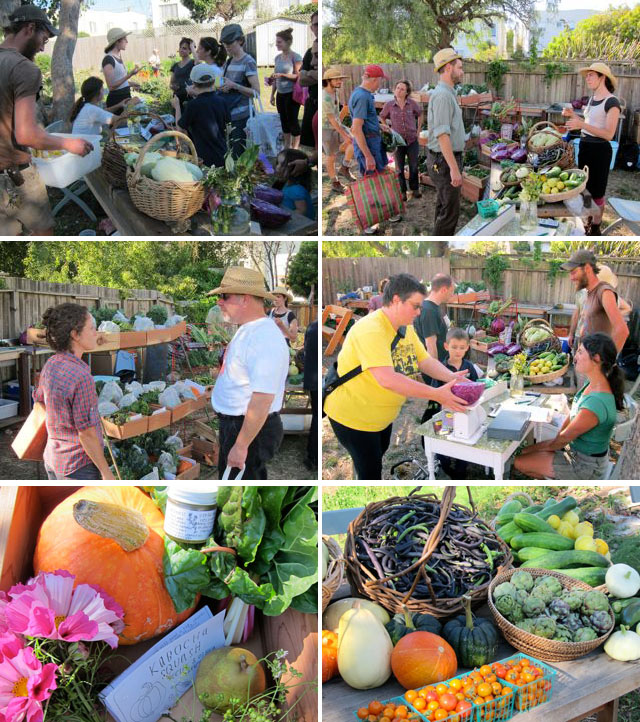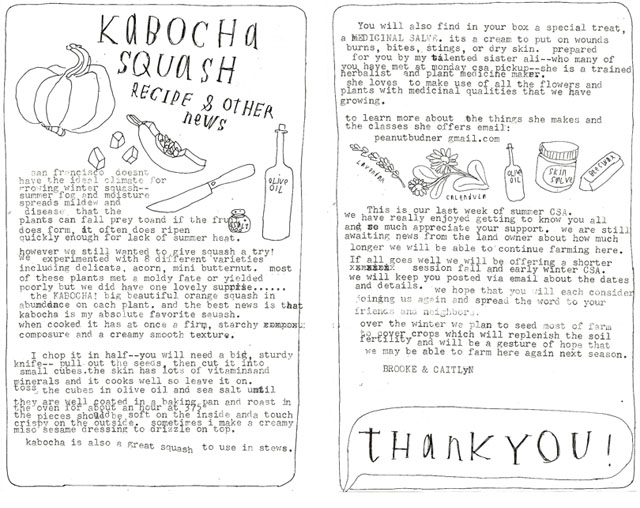
We’ve spent our first full year on the farm! We got a late start last Spring due to the new zoning legislation not going into effect until March, therefore postponing our ability to sell our produce, but we were still able to do quite a bit of experimenting for the rest of the year. We ran a Summer CSA and weekly farmstand, maintained restaurant and caterer sales, hosted regular volunteer workdays, and gave a handful of group farm tours. We grew a ton of beautiful, delicious produce. There were ups and downs this year; high and low moods and energy levels, crop failures and successes, moments when we felt so blessed with support and moments when we could have used more. All of it has added to our ever-evolving bank of observations and thoughts about farming in the city.
From the beginning of this project, we have promised to make our experiences as transparent as possible. Not only do we aim to create a self-sufficient model of farming in the city, but we also aim to make public the barriers and successes that we encounter along the way. During the growing season, we were often too busy to collect our thoughts and share them. So after a few weeks of break, we have synthesized our experiences. Here are some of our thoughts about farming in San Francisco so far:
Have we been able to support ourselves through our work this year?
The answer to this question is no, yes and sort of. Taking into account our late start on sales, the amount of infrastructure setup, invasive weed wrangling and soil conditioning we had to focus on this year, we feel very proud that we were able to cover all of our operating costs (we’ll share a general breakdown once we finish wrapping up all of our 2011 accounting), set aside a healthy materials budget for next year, offer small gestures of thanks to a committed farm apprentice and pay ourselves each a little under $10,000. Of course we acknowledge that we cannot sustain this type of salary for too long. This is not considered a living wage in San Francisco and if we tried to pay ourselves by the hour, our wages would be embarrassing. We also acknowledge that this salary absolutely would not be adequate for anyone responsible for supporting a child or other family members, repaying loans, or medical bills. But for this year we were able to make it work with a little help from our other part-time jobs, and with some plain and simple living. It also helped that we took home much of our own food and that our work was so exciting and consuming that we didn’t have much free time to spend extra money.
We also couldn’t have done everything we did this year without the solid and regular help of our friend Heather. Heather is a skilled and seasoned farmer who has worked on a number of small farms over the years. She came out a couple days a week to help us with farm work and harvests. We can’t tell you how helpful it was to have Heather’s consistent friendship and farm help!
Will we be able to support ourselves in the coming farm year?
The answer to this question is we think so, we hope so, and we definitely won’t be rolling in it. This year, because we have a lot of the farm setup in place and some experimentation under our belts with how to work most efficiently on this small scale, we think we can grow and sell quite a bit more food. We aim to nearly double our CSA membership, to maintain our restaurant sales, and to begin selling at a weekly farmers market. This increased production may or may not prove to be overly ambitious for the second year growing on less than an acre. But with focus, hard work, and help from friends and neighbors we think we can do it. The trick will be to take precautions not to exhaust our bodies and the soil fertility in the process. We will certainly report back at the end of next year. At that point it should be easier for us to make a more accurate prediction of the economic viability of market-gardening in our city. Stay tuned!
Benefits specific to urban farming:
- Community Engagement – One of the most positive outcomes of our farm so far has been our engagement with neighbors through our CSA. Because the farm is nestled within a densely populated residential neighborhood, it served as a hub during our weekly CSA pickup days, allowing neighbors a closer relationship to the plants and the act of farming. In addition to CSA pickup days, many neighbors stop by throughout the week to say hello, show their friends, take their parents for a walk, play with their kids, smell and see plants growing, or to offer us support. For some the farm really does double as a park! We feel like these face-to face interactions are the key to revisioning a society that values both food and farmers and that integrates this life-supporting activity back into the commons. See some testimonials from our neighbors.
- Experiential Learning – Because of its central location, our farm also offers very accessible volunteer opportunities for city residents interested in learning the basics of market-gardening. Volunteers come every week from all over the city, from the East Bay, and from around the country to lend a hand. They come by bus, by bike, by car, or by foot.
- Close Proximity to Market – We’ve experienced a unique and mutually beneficial relationship with the main restaurant we sell to. Our relationship with one especially supportive, consistent and flexible chef has been instrumental for us in working towards business viability. Because the farm is so close to our markets, we are able to sell tender items like salad mix and greens, delivering them immediately after harvesting with little travel time between the field and the refrigerator (or dinner plate). We are able to host farm tours for chefs and restaurant staff so that diners get the most accurate and firsthand knowledge about what they are eating and where it has come from.
Barriers specific to urban farming:
- Land Value – The value of land has proven to be very prohibitive for urban farming — both finding it and keeping it. In a city like San Francisco, it isn’t every day that you find a vacant lot that is close to an acre in size, and when you do, chances are it’s worth a lot of money. Not only is it financially unrealistic for an aspiring market-gardener to purchase a vacant lot in SF, but it is currently unrealistic to even rent a lot at market-rate for gardening in the city. If land is assesed at real-estate development rates as most lots are, the associated property taxes are also high. Generally the land-owner would need to pass on the cost of the property tax and mortgage to the renter which becomes an annual rent that could be anywhere from 5-15 times the cost of renting the same amount of rural land. So without some generosity from the respective landlord, or some new creative tax incentives from the city, affording rent as a market-gardening business is a very challenging proposition. We feel this challenge first hand as we run our business on the very shaky grounds of a now month-to-month lease. The owner of our property is actively trying to develop the lot so that he can recoup the significant financial investment that he made when he purchased it. If we were to cover his monthly expenses, our rent would be around $3,000/month. This is an untenable price for less than an acre of land for any farm business.
Also, under the tenuous framework of a month-to-month lease, we have found it difficult to make the infrastructural investments that would make our farm run most efficiently. Visitors ask us all the time why we don’t set up a more extensive rainwater catchment system, dig a well, plant fruit trees and berries, raise chickens, or build another tool shed. The answer to all of these questions is: we would absolutely love to! These will be on the top of our to-do list once we have more land security and can justify the cost and energy required.
We feel that it would be an amazing step if, as a city, we identified vacant lots that are well suited to market-gardening, and then structured a way to value them for their topsoil and assess them based on their potential fertility instead of their financial potential in the real estate market. We believe that in order to see urban market-gardening really flourish, we must first cultivate the political will to reduce taxes for some parcels of land that have agricultural potential.
- Balancing Sociability and Efficiency – Being surrounded by the vitality of a city and the social wealth of a neighborhood means a lot of daily conversation. We love this and we wouldn’t have it any other way, but we do note that it can slow down our work and make some days more efficient than others. We strive to strike a healthy balance between focused work and fulfilling interactions.
- Urban Water Costs – The price of municipal water is high. Chances are that an urban farm, like ours, won’t have a well or a pond to irrigate the crops and will have to tap into the municipal water supply. Because our lot doesn’t have it’s own water meter, we currently run our irrigation from a generous neighbors hose spigot, and we reimburse them monthly. In San Francisco, the bulk of one’s water bill goes towards treating the water after it washes down the drain and into the sewers. Of course all of the water we use permeates directly into the ground and never touches the sewage system, rendering our water use unlike a typical household’s but still responsible for the same fees. (We’re currently in the process of applying for SF’s Landscape Irrigation Rebate Program.) Most annual vegetables are pretty thirsty plants and because we irrigate close to 1/2 an acre of them currently — and even more this next season — we push our neighbor’s water use into the higher-usage tiers which corresponds with higher water prices per unit. So this year we have footed some very large water bills, to the tune of approximately $300/month in the height of the summer.
Fortunately, we are on our way to a solution. This year the SFPUC unveiled a grant program that allocates funding for new water meter installations for eligible urban gardens (a service which usually costs a minimum of $8,000). We were relieved to have received the grant, and this will allow us to open our own account and request a Landscape Irrigation Rate, hopefully significantly reducing our water bills. We hope to have that installed by early spring, just in time for the beginning of the dry season. By the way where is all the rain this winter?!
- The Price of Food The system that sets the value of food in this country is a huge beast for any sustainable farmer to be up against and we wrestle with this issue consistently. We appreciate that San Francisco has a large number of people who are broadening their awareness of the way food choices are tied to social, environmental and economic justice. We receive a great amount of encouragement, interest and moral support for our work. However, we do still find ourselves in need of more physical support in the form of committed customers. We hope that as we continue to make ourselves more accessible (via the farmers market and an expanded CSA), we can effectively communicate these needs.
Our experimentation with marketing outlets: We experimented with a few different marketing routes this year, including direct sales to restaurants, a CSA program, a weekly on-site farm stand, and sales to caterers. We discovered benefits and challenges to each of them.
- Restaurant sales – These were straightforward and relatively efficient. The main chef we work with was creative and flexible, meaning he was often willing to alter his menu based on whatever was abundant in our fields on any given week. We discovered this year that working with at least one very flexible and collaborative chef is a real support to a young farm business. Restaurant orders were often our largest orders, which allowed us to move a good amount of produce all at once. We appreciated the efficiency of this system, and, financially speaking, this was a fairly successful outlet for us.
- CSA – This was one of the more socially fulfilling components of our business and a solid financial basis for the season. The model was very important to us, as it allowed us to share our experience on the farm with an intimate group of committed subscribers, many of whom were immediate neighbors. We are really excited about having a strong CSA as the heart of our business plan again for this year.
- Farm Stand – Each week, during our CSA pickup window, we put together a small farm stand. This seemed like a great way for us to sell surplus produce as well as extra items that we didn’t grow in large enough quantities to put into the CSA boxes. We also liked the idea of neighbors being able to stop in and buy a few items for the week without having to sign on as committed CSA subscribers. Unfortunately this didn’t work out exactly as we had hoped. Farm stand sales turned out to be very low in relation to the amount of time we spent harvesting for the table each week, in part because the farm’s tucked away location isn’t ideal for drop-in customers. We were often left with large quantities of produce to donate or take home which was a challenge to deal with at the end of a very long day. We are hoping that by participating this year in an already active farmers market we will have a steady enough customer base to make our harvests worthwhile.
- Caterers – We found this to be our best outlet for specialty items like rare herbs, baby root vegetables and edible flowers (items that, because of their specialty, are able to fetch a higher price). We found the efficiency of working with caterers to be highly variable. For example a large order from a caterer that required minimal email exchange was very efficient, whereas a small order that required a lot of communication and special pickup time was less so. We would love to increase the amount of caterers we work with and special events that we provide for while also determining an efficient framework for these sales — a minimum order value and a few consistent pickup times.
Most successful crops this year: Red and golden beets, cabbage, lacinato kale, broccolini, basil (under a hoop-house), tokyo turnips, french breakfast radishes, artichokes, strawberries, spaghetti squash, kabocha squash, salad mix!
Least successful crops this year: Both napa cabbage, and tatsoi were attacked viciously by slugs. We had trouble with root maggot in our summer radishes and turnips, and onion root maggot in our summer scallions. Cucumbers were planted too late in the season and we didn’t get around to trellising. Under these conditions, the Lemon variety performed better than some of the Pickling varieties. Delicata squash and Butternut squash plants didn’t begin to flower and set fruit until September which didn’t leave them enough time to grow and ripen before winter.
Goals for 2012:This past year was focused on farm setup — putting together our CSA model, and building relationships with restaurants, neighbors and City officials. This year we will focus on widening our access to customers which means both growing our CSA and being present at the Mission Community Farmers Market. We will also focus on continuing to find more efficient practices and habits. This means both exploring the best tools and inventions for facilitating our garden tasks, as well as creating even better organizational structures for managing our recordkeeping. In addition we hope to continue to facilitate or open conversations on themes of agriculture (where it fits in our society and what power it has to shape our culture), food justice (equal accessibility for everyone), and the grassroots economy (how to vision resilient co-interdependent communities). If you have any ideas about how we can best raise and engage in these conversations that are so important to us, please let us know! We will also continue to nudge the city to introduce policies that will further support the growth of urban agriculture.
We are also excited about so many things on the farm! We’re going to be trying out new vegetable varieties and saving seed, setting up worm bins, planting a few fruit trees and perennial plants (our land tenure may be unpredictable, but we will see these tree plantings as a gesture of hope), hosting a small group of interns, getting a refrigerator, building more storage space, setting up a hoop house, attempting to increase our yields without drastically increasing our labor (tricky!), growing more flowers, and making more friends.
